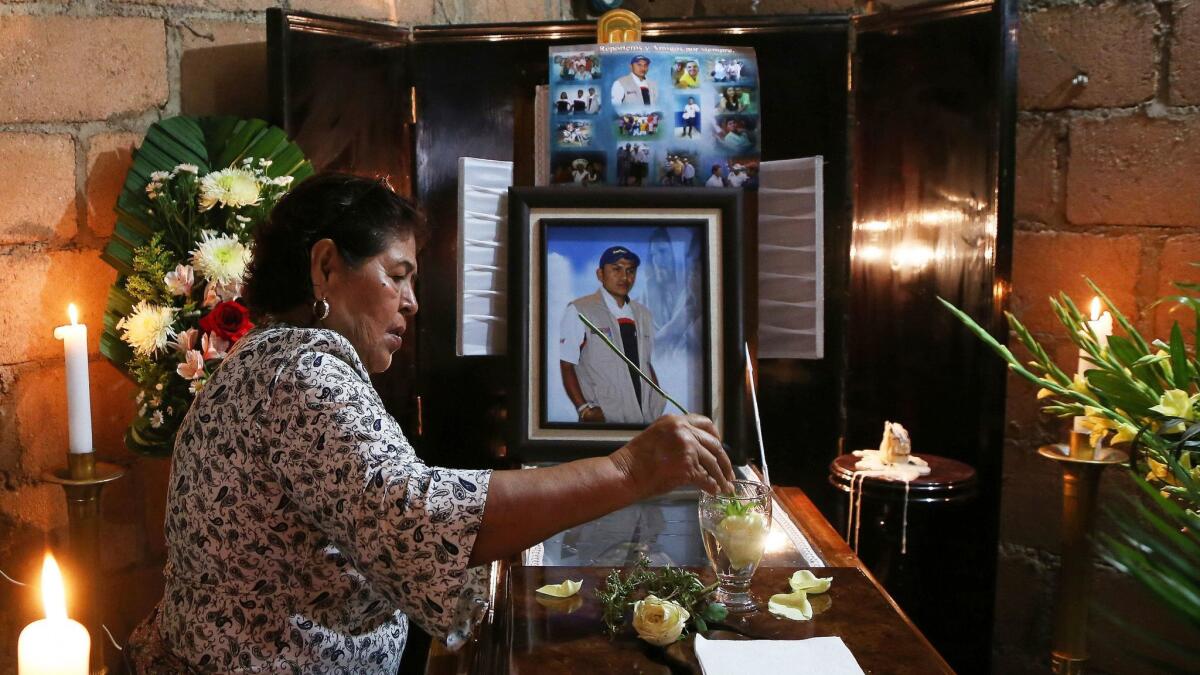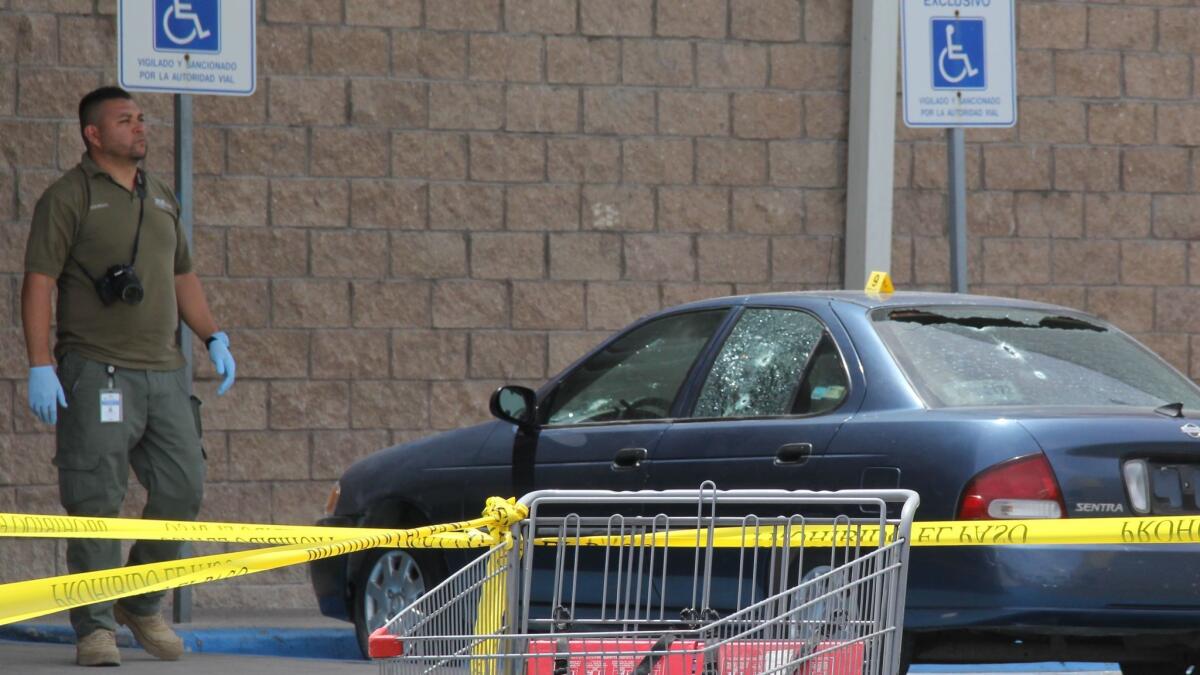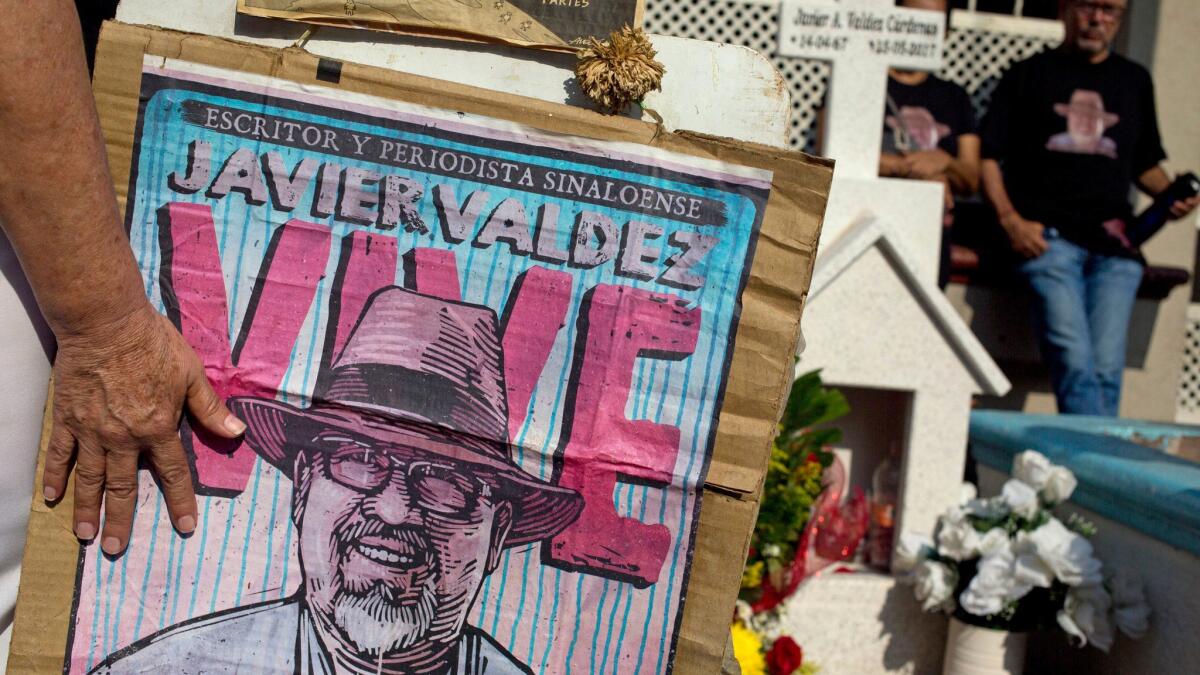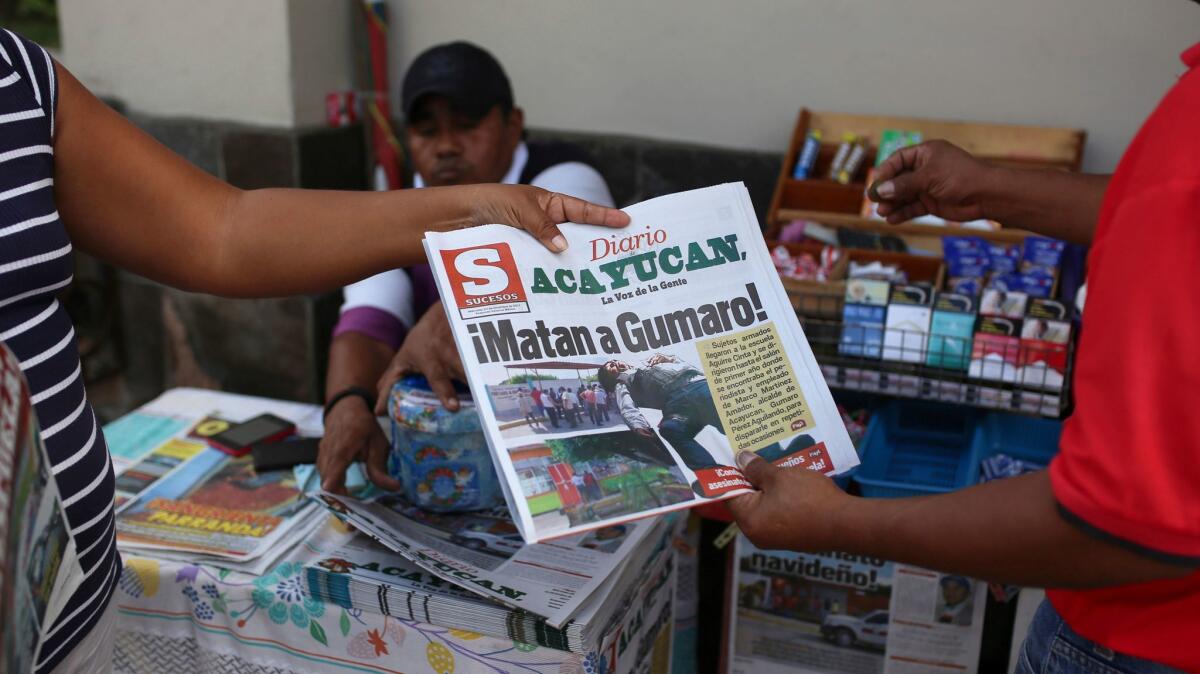Outside of war zones, Mexico is the most dangerous place for journalists

The number of journalists killed while on the job or in retaliation for their work declined worldwide in 2017, but one country remains increasingly perilous — Mexico.
So far in 2017, 42 journalists worldwide have been killed, compared with 48 a year earlier, according to the Committee to Protect Journalists, a nonpartisan group that tracks press freedoms.
Iraq and Syria were the deadliest places for journalists this year, with eight killed in Iraq and seven in Syria. But outside war zones, Mexico is the most dangerous place for journalists.
According to the committee, six Mexican journalists were killed in retaliation for their reporting, often of corrupt government officials or drug cartels. But according to news reports and the group Reporters Without Borders, six additional Mexican journalists died in 2017. The motivation for their slayings remains unclear, but they also often wrote about crime and corruption.
One journalist was gunned down Tuesday. Many of the 12 were killed in public. Some in front of their own children. Often, they were slain in broad daylight. Two were gunned down the same day.
Courtney Radsch, the committee’s advocacy director, said that Mexico’s leaders lack the political will to stop the violence against journalists and have repeatedly failed to provide the resources necessary to track down and prosecute the people behind the killings. Except in two cases there have been no arrests in this year’s killings.
“The murderers of journalists continue to go free, so it’s open season on Mexican journalists,” Radsch said.
“We hear from Mexican journalists that they are self-censoring, that they’re having to flee their homes and go into exile, and that it just becomes more and more dangerous for journalists in Mexico.”
Here are the 12 Mexican journalists killed this year, in chronological order, with the city and state where they died.
Cecilio Pineda Birto
Killed: March 2
City: Ciudad Altamirano, Guerrero
Where he worked: Pineda, a freelancer, had founded La Voz de Tierra Caliente, which stopped publishing in 2016.
What he wrote about: Pineda covered crime and corruption through his Facebook page, which has almost 32,000 followers, and also wrote for newspapers.
How he died: While Pineda was waiting in a hammock at a car wash for his vehicle, at least two armed men on motorcycles shot him about 10 times, according to the Committee to Protect Journalists. Pineda had been threatened before.
Ricardo Monlui Cabrera
Killed: March 19
City: Yanga, Veracruz
Where he worked: Monlui was a newspaper columnist and the editorial director of El Politico newspaper. He had been a journalist for more than 30 years.
What he wrote about: Monlui “often wrote about conflicts between the Veracruz authorities and farmers and workers in the sugar cane industry, one of the region’s main economic activities,” according to Reporters Without Borders.
How he died: Monlui was leaving a restaurant about 10 a.m. with his wife and son when his attackers rode by on a motorcycle, firing three times. One of the bullets hit Monlui in the head, the Committee to Protect Journalists noted. His wife and son were unharmed.
Veracruz has been a dangerous place for journalists, with at least six journalists from the state killed between 2010 and 2016 in direct retaliation for their work, according to the committee’s research.

Miroslava Breach
Killed: March 23
City: Chihuahua City, Chihuahua
Where she worked: Breach worked as a correspondent for the national newspaper La Jornada for 15 years and for several local newspapers. Since January, she also had run her own news agency, MIR.
What she wrote about: Breach wrote about drug cartels and corruption, among other things. Shortly before her death, Breach had been threatened for her reporting that alleged links between politicians and organized crime figures.
How she died: Breach, a mother of three, was pulling out of her garage with one of her children in the car when she was shot several times. She died on the way to the hospital. A sign left at the crime scene said “tattletale.” After her death, the newspaper Norte announced it was closing because the owner said Mexico had become too dangerous for journalists to do their jobs.

Maximino Rodriguez Palacios
Killed: April 14
City: La Paz, Baja California Sur
Where he worked: Rodriguez was a veteran journalist who had worked for national and regional media outlets. He had previously worked as a spokesman for the state attorney general’s office.
What he wrote about: At the time of his death, Rodriguez covered politics and crime in a news blog, Pericu Collective. A few days before he was killed, Rodriguez wrote a column that was critical of a local criminal gang.
How he died: Rodriguez and his wife were in the parking lot of a shopping center when he was shot and killed by a group of attackers in a white SUV. His wife was unharmed. Three suspects have been arrested in connection with the killing.

Javier Valdez Cardenas
Killed: May 15
City: Culiacan, Sinaloa
Where he worked: Valdez was a correspondent for the Mexico City-based daily La Jornada and a cofounder of the regional weekly Riodoce.
What he wrote about: Valdez was a well-known journalist and author who had written extensively about Mexico’s drug war, corruption and crime. Valdez had spoken openly about the dangers that Mexican journalists faced. When Breach was killed in March, Valdez tweeted: “Let them kill us all, if that is the death penalty for reporting this hell. No to silence.”
How he died: Shortly after leaving the Riodoce office at about noon, Valdez was dragged out of his car on a busy street and shot at least 12 times.
In 2011, Valdez was awarded with the Committee to Protect Journalists’ International Press Freedom Award. “I dedicate this award to the brave journalists, and to the children and youths who are living a slow death,” Valdez said. “I have preferred to give a face and a name to the victims, to create a portrait of this sad and desolate panorama, these leaps and bounds and short cuts towards the Apocalypse, instead of counting deaths and reducing them to numbers.”
You can watch his speech below, which starts near the 6:30 mark.
Jonathan Rodriguez
Killed: May 15
City: Autlan de Navarro, Jalisco
Where he worked: He worked as a reporter for El Costeño, a weekly newspaper.
What he wrote about: He covered local news, and his family had previously faced threats.
How he died: Rodriguez and his mother, Sonia Cordova, deputy director of El Costeño, were driving when gunmen opened fire on them, killing Rodriguez and wounding his mother.
Salvador Adame Pardo
Killed: Killed between May 18 and June 14
City: Gabriel Zamora, Michoacan
Where he worked: Adame, a 20-year journalism veteran, was owner and director of 6TV.
What he wrote about: Adame covered general news and local politics in southern Michoacan. The Committee to Protect Journalists found in its research that Adame had been a frequent critic of local officials.
How he died: Gunmen abducted Adame about 8 p.m. May 18 near a water-purifying plant in Nueva Italia, forcing him into the back of a black SUV. His body was found June 14, burned, on the side of a road in the municipality of Gabriel Zamora. Police have arrested two men on suspicion of carrying out Adame’s abduction and killing.
Luciano Rivera Salgado
Killed: July 31
City: Rosarito, Baja California
Where he worked: Rivera Salgado was a TV reporter and an editor for El Dictamen, a news website focused on Rosarito and Tijuana.
What he wrote about: Rivera Salgado covered crime. Mario Rivera, the director of CNR TV, where Rivera Salgado worked for nearly 10 years, told The Times that it was essential that authorities look closely at whether his work played a role in his killing. “He often criticized the security situation here,” Rivera said. “We as a station have been very tough critics.”
How he died: Rivera Salgado was celebrating his 29th birthday when he was shot in the head at 1:40 a.m. while at La Antigua Bar in Rosarito.
Edwin Rivera Paz
Killed: July 9
City: Acayucan, Veracruz
Where he worked: Rivera fled Honduras after Igor Padilla, a TV journalist whom Rivera worked with, was killed. Rivera feared he would also be killed.
What he wrote about: “Padilla had covered crime and also hosted a humorous television show, and Rivera was his cameraman,” the Guardian reported.
How he died: Rivera was shot to death, reportedly in the afternoon by two people on a motorcycle.

Candido Rios Vazquez
Killed: Aug. 22
City: Hueyapan de Ocampo, Veracruz
Where he worked: Rios founded a local newspaper and covered crime for a regional paper, El Diario de Acayucan.
What he wrote about: Rios was a crime reporter who wrote about government corruption for years. “The threats were constant,” Rios’ editor, Cecilio Perez Cortes, told The Times.
How he died: Rios was outside a corner store with a former police investigator and a local rancher when the three were killed in a drive-by shooting. In 2013, Rios enrolled in a Mexican government program to protect journalists. The program provides reporters with emergency evacuations, police protection and, “in some cases, even a panic button that summons authorities.”
Edgar Daniel Esqueda Castro
Killed: Abducted Oct. 5, found dead Oct. 6
City: San Luis Potosi, San Luis Potosi
Where he worked: Esqueda Castro was a freelance photographer for local news websites.
What he wrote about: Esqueda Castro primarily covered local events and crime stories. He had been threatened and beaten by local police, according to the Committee to Protect Journalists.
How he died: Armed men broke into his home, claimed they were state investigative police and took him away at gunpoint. He was found dead the next day after being tortured and shot.

Gumaro Perez
Killed: Dec. 19
City: Acayucan, Veracruz
Where he worked: He founded the online news site La Voz del Sur and also worked for the local government in some capacity.
What he wrote about: Perez covered crime for several local outlets.
How he died: Perez was attending a Christmas party at his son’s elementary school when he was shot and killed.
He was enrolled in a state program designed to protect journalists.
Twitter: @jaclyncosgrove
Start your day right
Sign up for Essential California for news, features and recommendations from the L.A. Times and beyond in your inbox six days a week.
You may occasionally receive promotional content from the Los Angeles Times.




